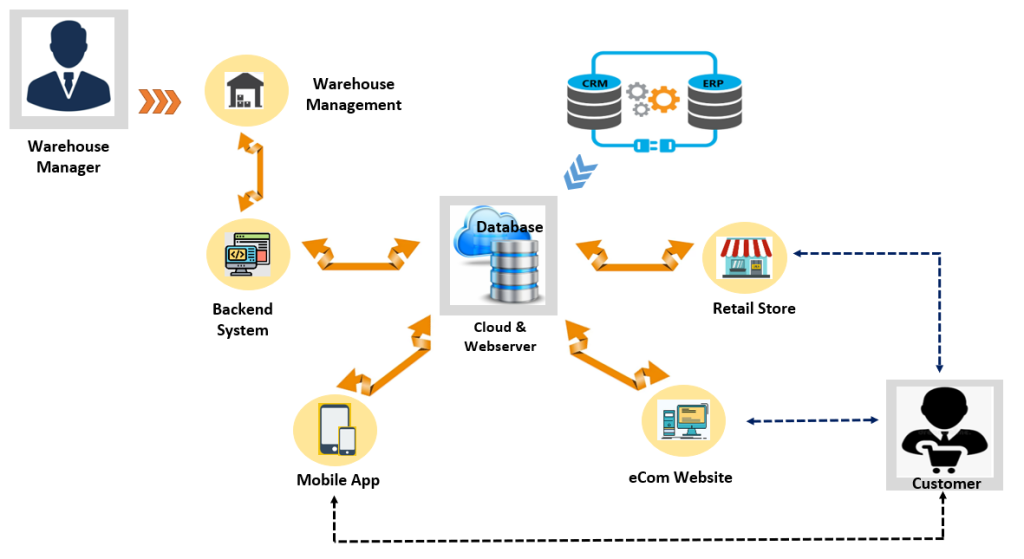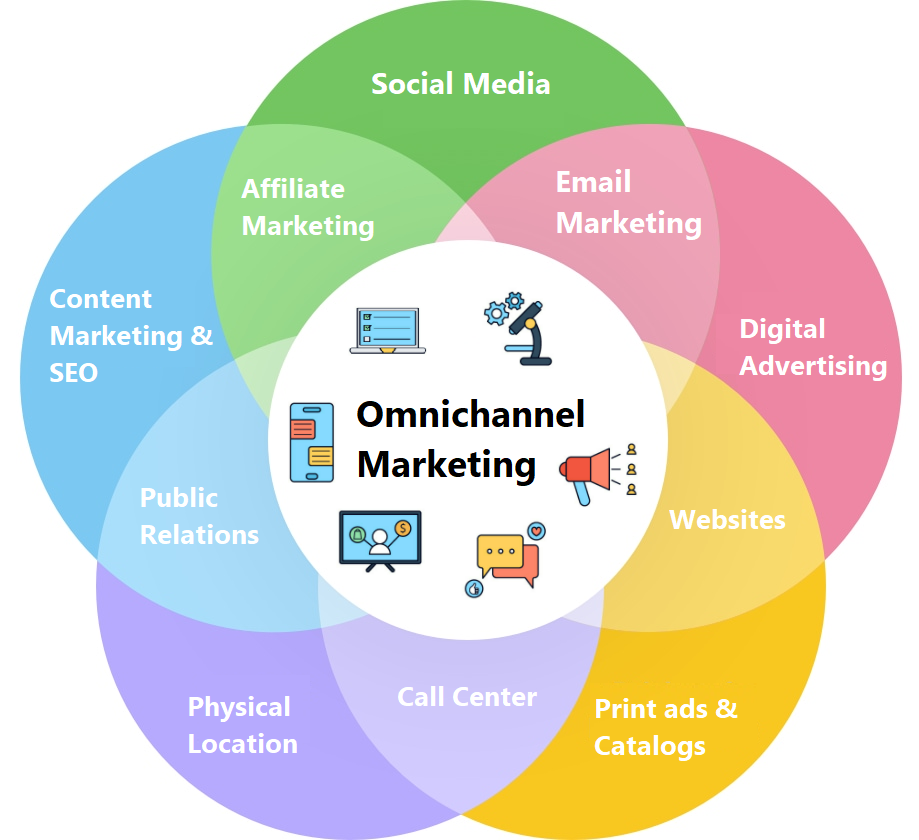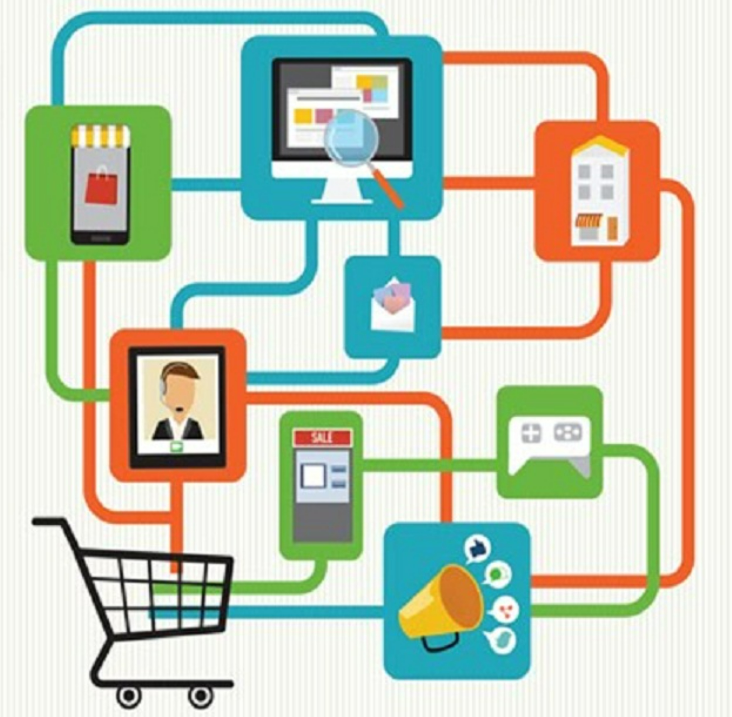Omnichannel
The Omnichannel System is designed to meet the needs of wholesale and retail outlets. The software contains tools for managing and planning outlet sales, and purchases, managing their suppliers, controlling the types and quantities of products, analyzing their movement, replenishing the inventory, and the executing of sales orders through the digital point of sale (POS).

Here are the main Omnichannel system functionalities that the System user can perform:
- Managing Suppliers and acquiring the products stock
- Registering the inward and outward inventory items and quantities.
- Setting up customer accounts and payment policies
- Setting up the product selling pricing according to the customer’s segment, whether corporate or individual customer.
- Manage the purchase orders and register purchases costs
- Managing the product stock (Receiving, Counting, replenishing, moving)
- Issuing quotations
- Executing the Sales invoices and bills through the Point of Sale (PoS)
- Executing the eCommerce orders and the cross-outlet order
- Managing the customer order and shipments
- Calling various operational and accounts reports.
- Handling the sales returned items
- Managing the payable and receivable accounts
The Omnichannel system is a unified database of products, their quantities, prices, and locations that customers can reach and request from multiple interfaces such as:
- Outlet Points of Sale (POS) or other outlets use the same system or integrated to it electronically.
- The e-Commerce store/marketplace that the omnichannel system is associated with.
The Omnichannel System is available in annual Software as a Service (SaaS) subscription base to wholesale/retail outlets and it can be integrated into outlet’s own online store or with any associated eCommerce marketplace.
Omnichannel Marketing
Omnichannel marketing is the integration and cooperation of the various channels organizations use to interact with consumers, with the goal of creating a consistent brand experience. This includes physical (e.g. stores) and digital channels (e.g. websites).


Order Management
Order management is the facilitation of all retail order data and processes—from storefront to front door. It automates the receiving, routing, fulfilling, tracking, notifying, (and potentially returning/exchanging) of orders
Order management system is an intuitive way of empowering brands and retailers for enhancing efficiency and increasing profitability. It is a very promising platform for brands and retailers who want to monitor their orders and smoothen their last-mile delivery process.


Point of Sale (POS)
A Point of Sale (POS) is technically a system in a retail store from which you conduct the sale of physical goods. In a store, a POS is where the checkout happens, orders are processed and bills are paid.
POS typically contains: POS system,POS Software, POS Terminal,


product information management (PIM)
The Product Information Management System (PIMS) (e-Catalog) is a software (web/mobile) designed to manage the product data such as;
- Basic product information (Code/ name / Product family)
- Attributes
- Specifications
- Media (Images / Demonstration video)
- Descriptive data
- Transport, handling and storing conditions
- Brochures guide to installation or use
- Meta data related


The System enables the product data specialist to manage and enrich the product information to the system according to standard phases starting with
- The management of basic product data (Product Data Mgmt.-PDM)
- Then the phase of enriching this data with more detailed and descriptive information supported by multimedia such as images, introductory videos and brochures (Product Information Mgmt.-PIM)
- Till the phase of periodically reviewing, updating, revising and cleaning data (Master Data Mgmt. – MDM).
The PIMS empowered by effective data management tools for Product Mapping to optimize the best product data user experience such as:
- Product Multi Brand/Multi Cross Code/Multi Cross Name
- Product Cross-Category / Cross Product Family (Sub-Category)
- Mapping other Cross-Sell Product
- Mapping other Up-Sell Product
The PIMS landing page (eCatalog) provided with multiple Product Search and Reach tools such as:
- Search Engine (Product Name, Product Code)
- Filtering Tools (Make, Use, Product Group and class)
- Browse and Navigate (Product Category, Product Family)
The PIMS is available as Software as a Service (SaaS) system in annual subscription base or can be customized as per the customer use case and easy to integrate APIs to any eCommerce platform of sales order management system.

